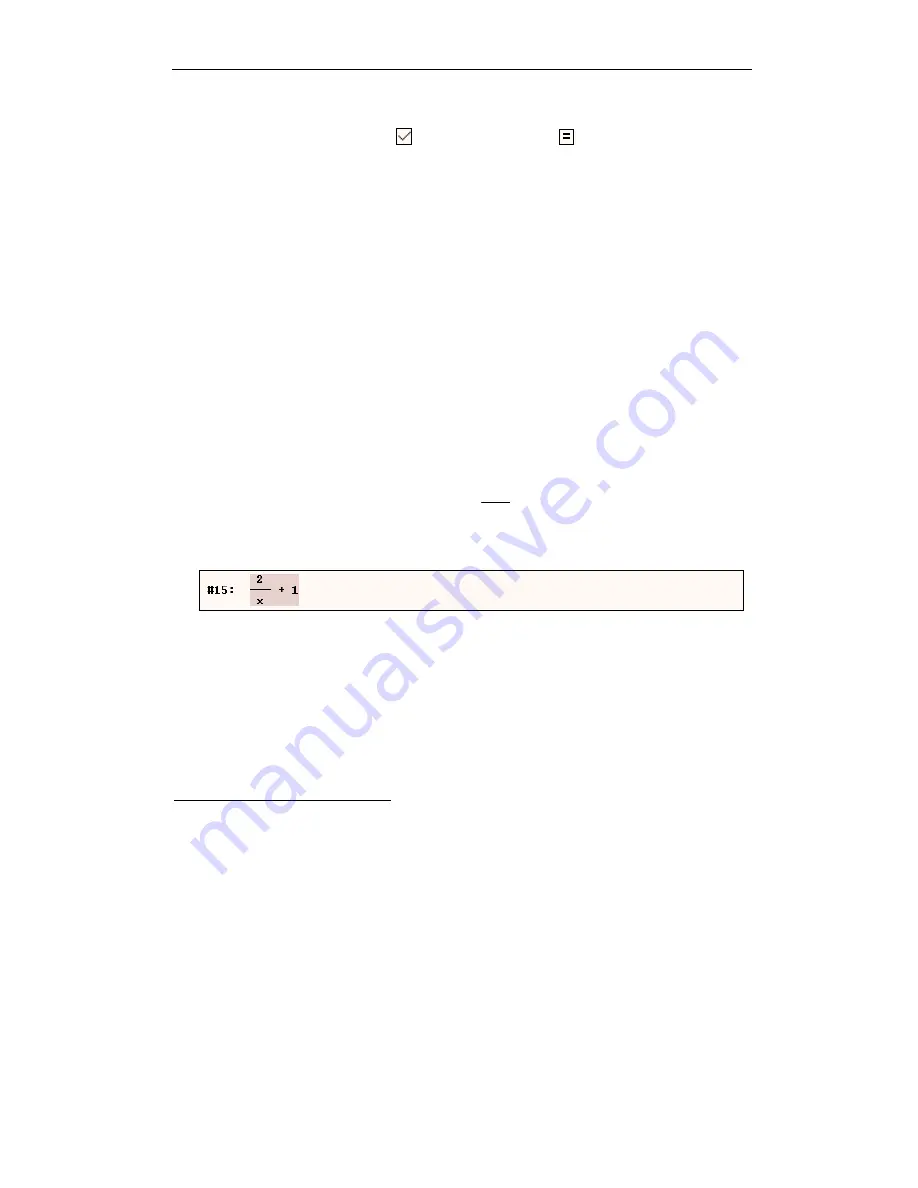
Kutzler & Kokol-Voljc: Introduction to D
ERIVE
5
9
This button produced two expressions, #13 and #14 and has the same effect as entering the
unsimplified expression with
(¢)
or
, then simplifying it with
. It is, therefore, a convenient
shortcut for the frequently used “enter and simplify.” This example also shows how convenient
fast input is in D
ERIVE
. You can enter expressions just as you would write them on paper. For ‘
x
times
y
‘ simply enter
xy
. No multiplication operator is needed between
x
and
y
. For ‘Sine of
x
‘
simply enter sin
x
. No parentheses are needed around
x
.
The Expression Entry Toolbar has buttons for entering, simplifying, entering & simplifying,
approximating, and entering & approximating expressions.
The simplified expression #14 differs from the unsimplified expression #13 only in the order in
which its terms are displayed. While unsimplified expressions are displayed as they were entered
(except for the 2-dimensional pretty print format), simplified expressions are displayed in a
standardized format using a certain term ordering.
Back to how simple it is to enter expressions. A consequence of the convenient fast input
,
such
as
xy+sinx
for
sin( )
x y
x
⋅ +
, is that variable names can consist of only one character (for
example
x
and
y
). This suffices most of the time, but if you need to use multicharacter variable
names, D
ERIVE
allows this, too (for example
time
or
x
12). Using multicharacter variable names
will be explained in Chapter 14.
Clearly, you cannot omit all parentheses. For example, you will need to parenthesize the
denominator to enter a rational expression such as
2
1
x
+
. If the parentheses are omitted in this
example, the resulting expression has a different meaning.
Enter:
2/x+1
Oops—the expression on the screen looks different from the intended expression! D
ERIVE
applies operations in the conventional order, for example multiplication and division before
addition and subtraction. As you can see from the above example, the 2-dimensional screen
display of an input provides you with valuable feedback about the soundness of your input.
1
1
Educator’s footnote:
A very simple educational exercise with D
ERIVE
, therefore, consists of asking
the students to input expressions given to them on the chalkboard or a piece of paper. Because D
ERIVE
features 2-dimensional output of expressions, the students get an immediate feedback. If the
expression on the screen looks different from the one on the chalkboard or paper, then the input was
wrong, and they must try again. When the teacher lets students input expressions of increasing
complexity, they learn how to “linearize” expressions by trying and experimenting (trial and error),
and learn to understand the structure of expressions. In this way, they improve their competence in
recognizing structures, which is one of the basic mathematical skills important in many areas.





























